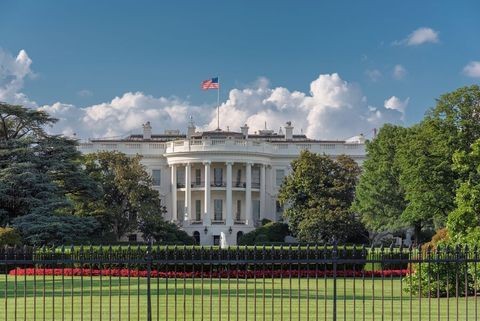Environmental and Safety Compliance and Investigations
Overview
Investigations involving environmental and safety issues can take many forms: civil investigations by state or federal regulators, internal investigations triggered by whistleblowers, compliance audit results, or a threatened private party citizen suit, criminal investigations by government enforcement authorities, and a combination of all three in response to an industrial facility incident. Environmental and safety compliance requires constant diligence and a robust compliance program and culture; the handling of an investigation must have similar rigor. While most day-to-day compliance can be handled effectively by trained environmental, health, and safety personnel, an investigation requires the additional layer of experienced legal counsel to navigate the complex elements of conducting a thorough investigation, communicating with government enforcement (including timing and substance of disclosures), and developing appropriate corrective actions.
Contacts
Insights
Client Alert | 2 min read | 05.19.25
On May 15, 2025, U.S. Department of Energy (“DOE” or the “Agency”) issued a memorandum outlining the Agency’s new policy for evaluating financial assistance awards (e.g., grants, cooperative agreements, and technology investment agreements) to identify waste, fraud, and abuse. Businesses, universities, non-profit organizations, and other entities that have received DOE financial assistance awards now face increased risk of investigation and potential award termination, withholding of funding, and project modification.
Speaking Engagement | 04.24.25
"Revised Process for Developing Draft PULAs," CropLife America and RISE Regulatory Conference
Client Alert | 2 min read | 01.22.25
Trump Issues Executive Order Directing Drastic Clampdown on Offshore Wind Leasing
Publication | 10.25.24
Sustainability Lawyers Need to Add Antitrust Expertise to Their Arsenal
Representative Matters
- Represented a global biotechnology company in an investigation of an EPA enforcement action that alleged violations of the "worker protection standard" (WPS) under the Federal Insecticide Fungicide and Rodenticide Act (FIFRA). Successfully settled the matter under very favorable terms.
- Represented a national laboratory in the investigation of the causes of an incident and the related EPA and state environmental authority enforcement and penalties for alleged environmental violations.
- Represented a major automobile manufacturer conducting an internal review of its vehicle lines to assure compliance with U.S. and EU emissions standards following disclosure of Volkswagen's emissions issues.
- Represented a global biotechnology company in a multi-agency investigation resulting from the distribution of an unapproved genetically modified commodity food crop. Obtained quick federal government determination that the product was safe for consumption, thereby avoiding possible recalls, market disruptions and potential commercial liability. Successfully settled resulting enforcement cases
- Represented a large pesticide manufacturer in USEPA and state investigations stemming from reports of widespread adverse effects associated with the client’s product. Successfully settled associated enforcement case.
- Represented a large telecommunications company in a multi-region investigation of the company’s compliance with chemical reporting obligations at several hundred facilities nationwide. Successfully utilized EPA’s Audit Policy to avoid any civil penalties.
- Conducted an internal investigation and risk assessment for a Fortune 100 corporation related to the company's remediation activities.
- Conducted an internal Clean Water Act investigation for a corporation related to historical development activities in wetlands.
- Defended a Clean Water Act criminal investigation and enforcement action against a private wastewater treatment corporation.
- Defended a large natural gas producer in investigating and avoiding threatened Clean Water Act citizen suits related to hydraulic fracturing operations.
Representative Criminal Environmental and Safety Matters
- Defended a major construction company on felony charges, obtaining an acquittal following a month-long jury trial involving Clean Air Act and related allegations.
- Defended several mining companies in high-profile investigations of alleged criminal violations of the Mine Safety Act, including conducting the necessary internal investigations, managing subpoena responses and document productions, and defending the companies during resulting congressional inquiries and hearings and grand jury proceedings.
- Represented a barge hauler that carried scrap metal on the Mississippi River, and a chemicals manufacturer in Louisiana, in grand jury Clean Water Act investigations of a joint venture engaged in dam construction on the Ohio River.
- Defended a Texas oil refinery in a federal grand jury investigation involving allegations of Clean Air Act violations.
- Defended an asbestos remediation company and its chief executive on federal charges of defrauding EPA and the Occupational Safety and Health Administration (OSHA) in their licensure, oversight, and enforcement functions.
- Defended several individuals in a three-week jury trial alleging criminal violations of the Lacey Act in connection with the importation and distribution of mislabeled seafood.
- Defended an owner of a wholesale seafood company in a five-week jury trial concerning allegations of illegally harvested striped bass under the Lacey Act.
Contacts
Insights
Client Alert | 2 min read | 05.19.25
On May 15, 2025, U.S. Department of Energy (“DOE” or the “Agency”) issued a memorandum outlining the Agency’s new policy for evaluating financial assistance awards (e.g., grants, cooperative agreements, and technology investment agreements) to identify waste, fraud, and abuse. Businesses, universities, non-profit organizations, and other entities that have received DOE financial assistance awards now face increased risk of investigation and potential award termination, withholding of funding, and project modification.
Speaking Engagement | 04.24.25
"Revised Process for Developing Draft PULAs," CropLife America and RISE Regulatory Conference
Client Alert | 2 min read | 01.22.25
Trump Issues Executive Order Directing Drastic Clampdown on Offshore Wind Leasing
Publication | 10.25.24
Sustainability Lawyers Need to Add Antitrust Expertise to Their Arsenal
Insights
50 Years On, It's Time to Do Some Serious Thinking About the Clean Air Act
|01.01.22
EM Plus Magazine, Air & Waste Management Association
TSCA Active Substance Reporting: Advice for Importers and Manufacturers
|09.01.17
Chemical Watch
Environmental Law Handbook
|01.01.17
(23d ed.), Bernan Press
Opportunity for TSCA Reform in the 112th US Congress
|12.01.10
Chemical Watch
Pesticide Regulation Handbook
|01.01.07
4th Edition
China's Regulation of Agricultural Biotechnology
|12.01.06
Metropolitan Corporate Counsel
The TSCA Handbook
|01.01.06
4th Edition, Government Institutes
ABA SEER Fall Conference: “Supply Chain Logistics: How to Keep up With Increasing Regulatory Requirements and Restrictions on Global Supply Chains”
|10.24.24
Biden’s Environmental Justice Push and Its Impact on Retailers’ ESG Considerations
|05.26.21
Crowell & Moring’s Retail & Consumer Products Law Observer
Professionals
Insights
Client Alert | 2 min read | 05.19.25
On May 15, 2025, U.S. Department of Energy (“DOE” or the “Agency”) issued a memorandum outlining the Agency’s new policy for evaluating financial assistance awards (e.g., grants, cooperative agreements, and technology investment agreements) to identify waste, fraud, and abuse. Businesses, universities, non-profit organizations, and other entities that have received DOE financial assistance awards now face increased risk of investigation and potential award termination, withholding of funding, and project modification.
Speaking Engagement | 04.24.25
"Revised Process for Developing Draft PULAs," CropLife America and RISE Regulatory Conference
Client Alert | 2 min read | 01.22.25
Trump Issues Executive Order Directing Drastic Clampdown on Offshore Wind Leasing
Publication | 10.25.24
Sustainability Lawyers Need to Add Antitrust Expertise to Their Arsenal














